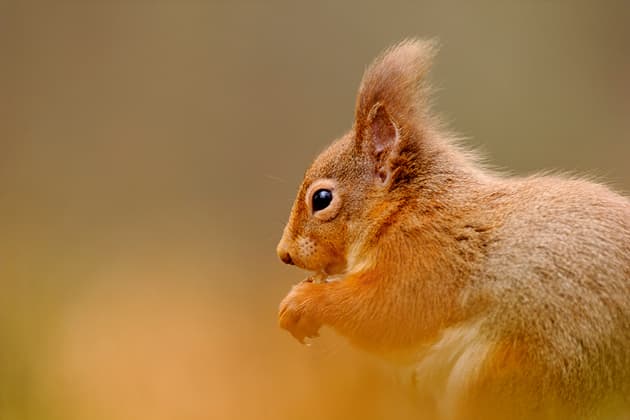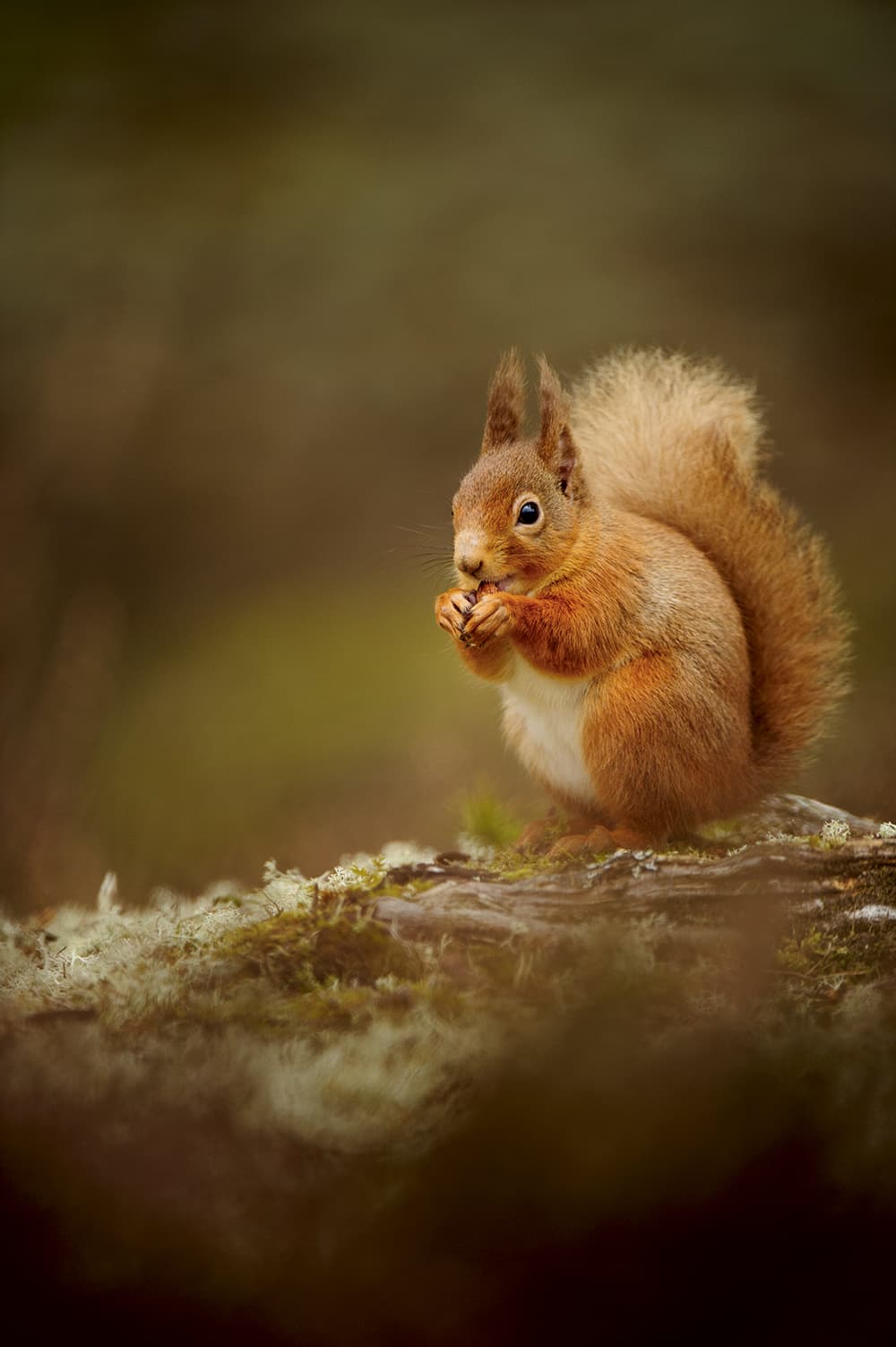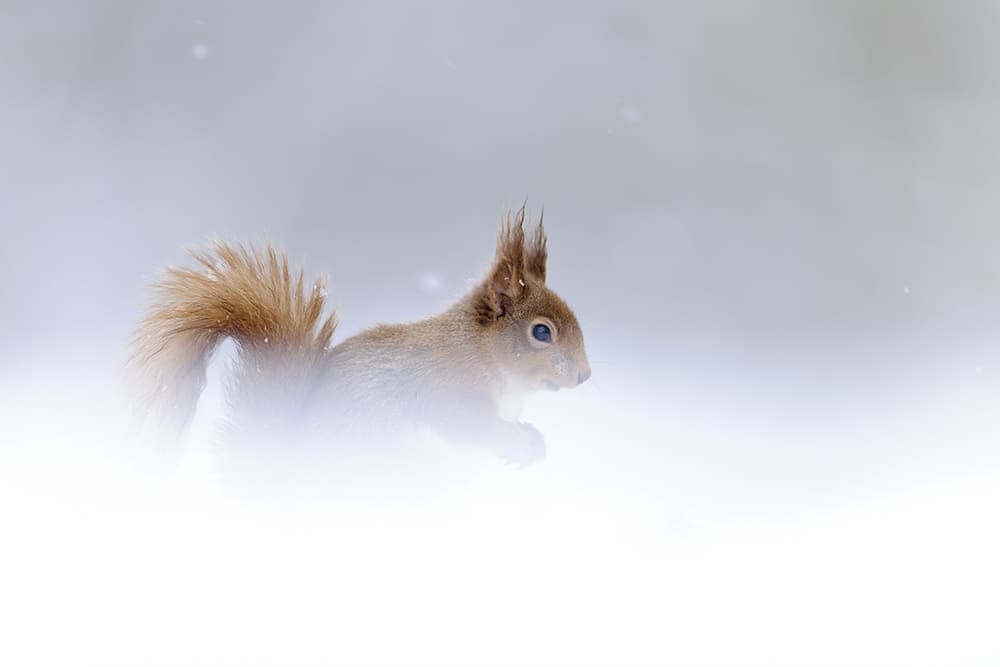About the red squirrel
The red squirrel is the only native squirrel found in the United Kingdom and Ireland. There are around 160,000 of them.
- Location: Found in parts of Scotland, northern Cumbria and Northumberland, and parts of Ireland. Isolated populations can be found in Wales, North Yorkshire, Durham, Lancashire, Brownsea and Furzey Islands, the Isle of Wight and Jersey.
- Size: Adult size is 35-45cm from head to tail, weighing 220-435g, with males larger than females.
- Nests (dreys): Red squirrel dreys are found in trees close to the trunk or in branch forks typically 6m above ground level.
Red squirrels are active all year round during daylight hours. While they don’t hibernate, they will remain in their nests during periods of severe winter weather. Through winter, their main period of activity peaks around late morning, while during summer, they peak twice, in mid-morning and late afternoon. Adverse weather can reduce their activity. Red squirrels have a thicker coat and longer ear tufts in winter.
Habitat
Red squirrels are an arboreal mammal, so-called because they live in trees. They can be found in all types of woodland. Due to the greater diversity and availability of food found in deciduous woodland, historically this is where the greatest population densities of red squirrels could be found in the United Kingdom and Ireland. However, following the introduction of North American grey squirrels at the end of the 19th century, red squirrels were outcompeted in these areas. Red squirrels are now increasingly restricted to large conifer woodlands and plantations.
Best time to shoot
The best time for photographing red squirrels is during the winter months when their winter coats and characteristic long ear tufts have developed. Put simply, this is when they are at their most photogenic. Late summer can also be a good time to photograph them, and although they won’t have their winter coats and long ear tufts, purple hues of flowering heather can make for a great backdrop to set off their reddish-brown fur.
Shooting advice
Feeding stations
Red squirrels can be quite difficult to track down, even in areas that have a good population. If you only have a limited amount of time available for photography, or are struggling to find them, many nature reserves have feeding stations that are visited by red squirrels.
Available light
Photographing in woodland, especially conifer plantations in winter, can present challenges due to low light levels. Look for areas where natural light penetrates the tree canopy. Photographing red squirrels in a ‘pool’ of natural light against a dark background can make for stunning images. You can also experiment with photographing red squirrels backlit.
Positioning
Photographing from any animal’s eye level makes for more intimate portraits. With an animal as small as the red squirrel, this means you may have to lie down on the ground. I like to photograph through vegetation, such as heather, isolating an individual animal in the gaps in the undergrowth and using a wide aperture to throw both the foreground and background out of focus.
Snow
While red squirrels may be less active in prolonged periods of heavy snowfall, photographing them in the snow can make for great photographs. If you’re lucky and snow is falling while you’re shooting, experiment with a variety of shutter speeds, freezing the snowflakes mid-air or recording their movement as they fall.
Kit list
Lenses
As encounters with red squirrels can be brief, a telephoto zoom (200-400mm f/4) will allow you to vary composition quickly without moving position. A wideangle lens, such as a 16-35mm, placed on a remote camera with a wireless trigger, will allow you to take images showing red squirrels in their environment.
CamRanger
Wireless remotes, used with a smartphone or tablet, allow real-time monitoring of a subject and remote camera control.
Andrew Mason is a full-time professional nature photographer. His work is widely published and has been used in books, magazines and calendars, and by corporate and government clients, among others. www.andrewmasonphotography.co.uk









